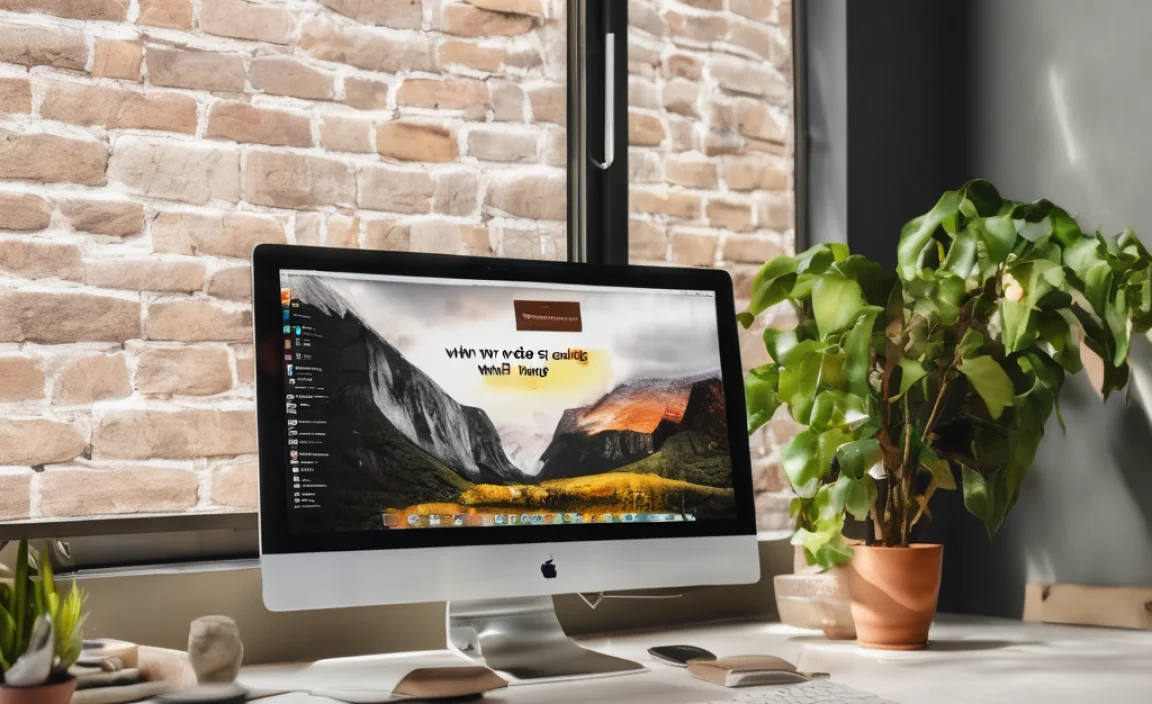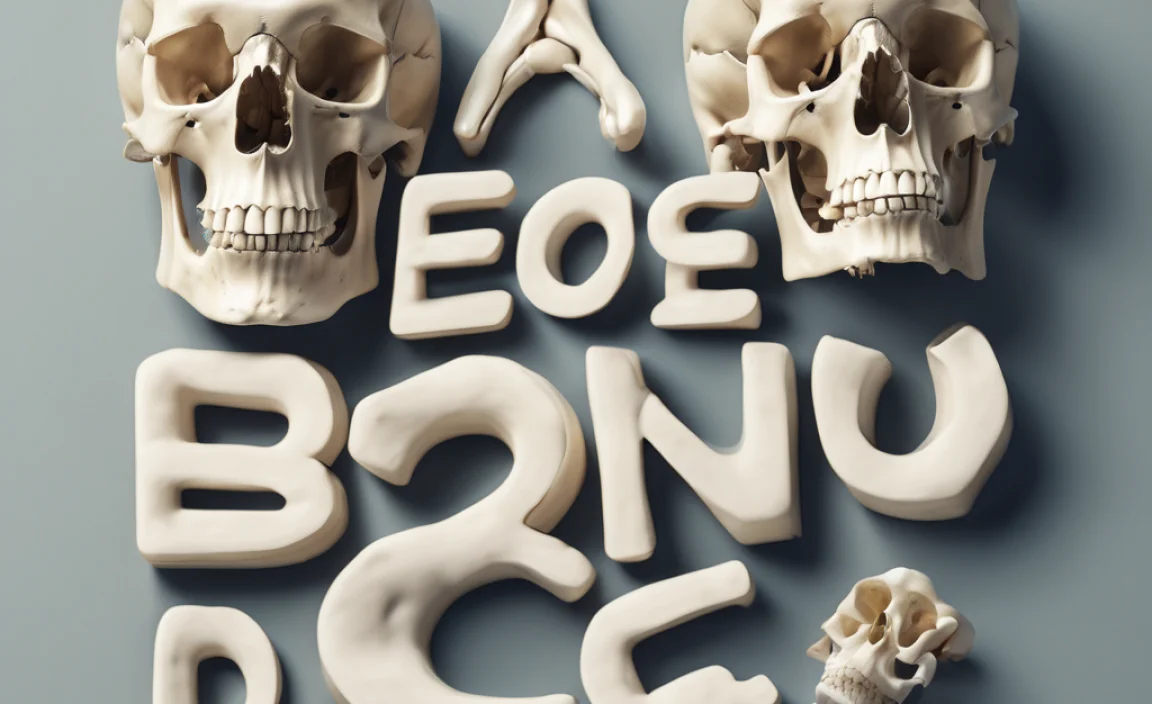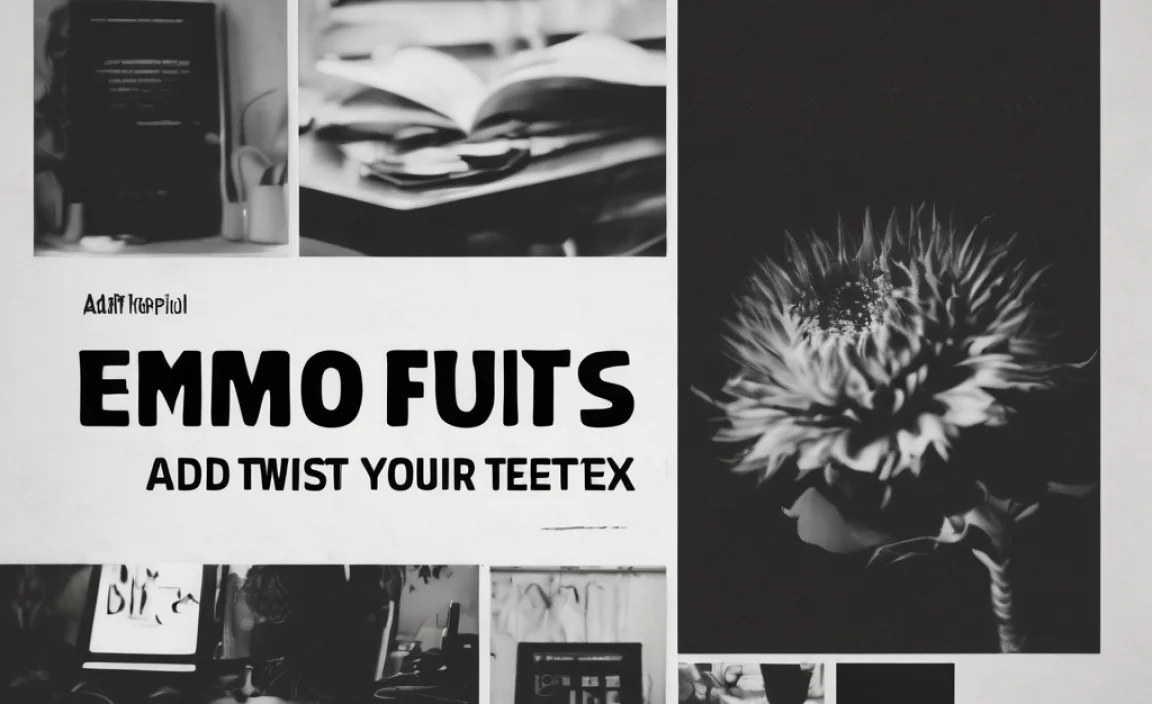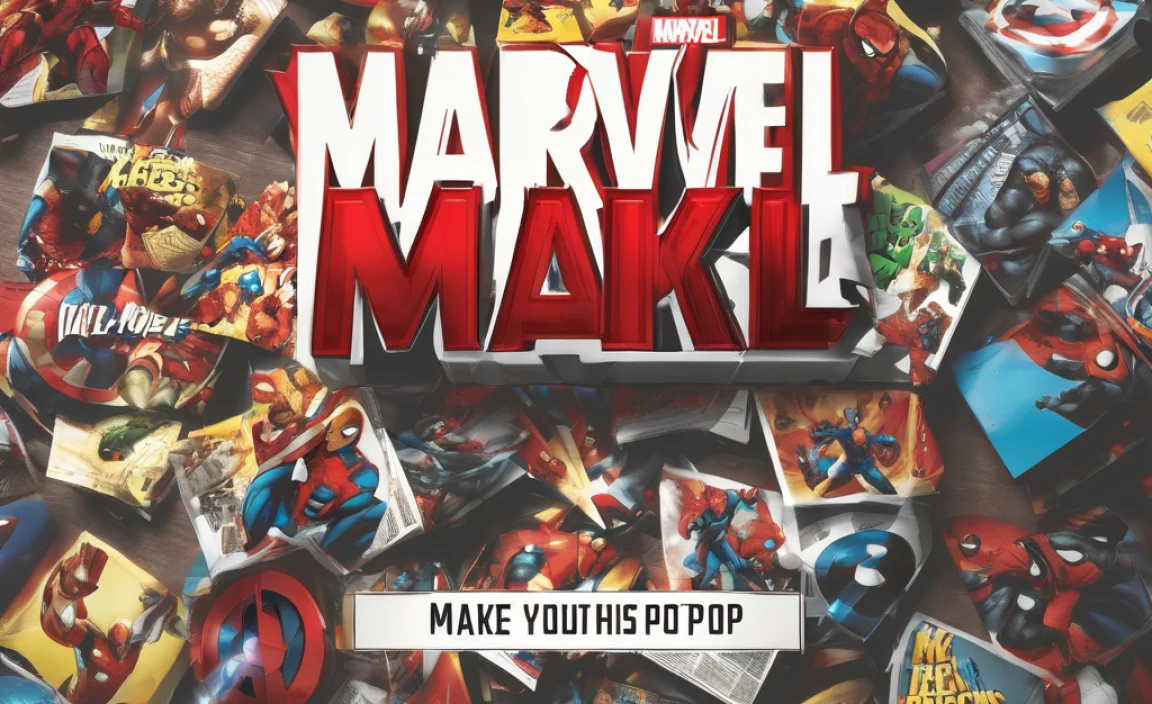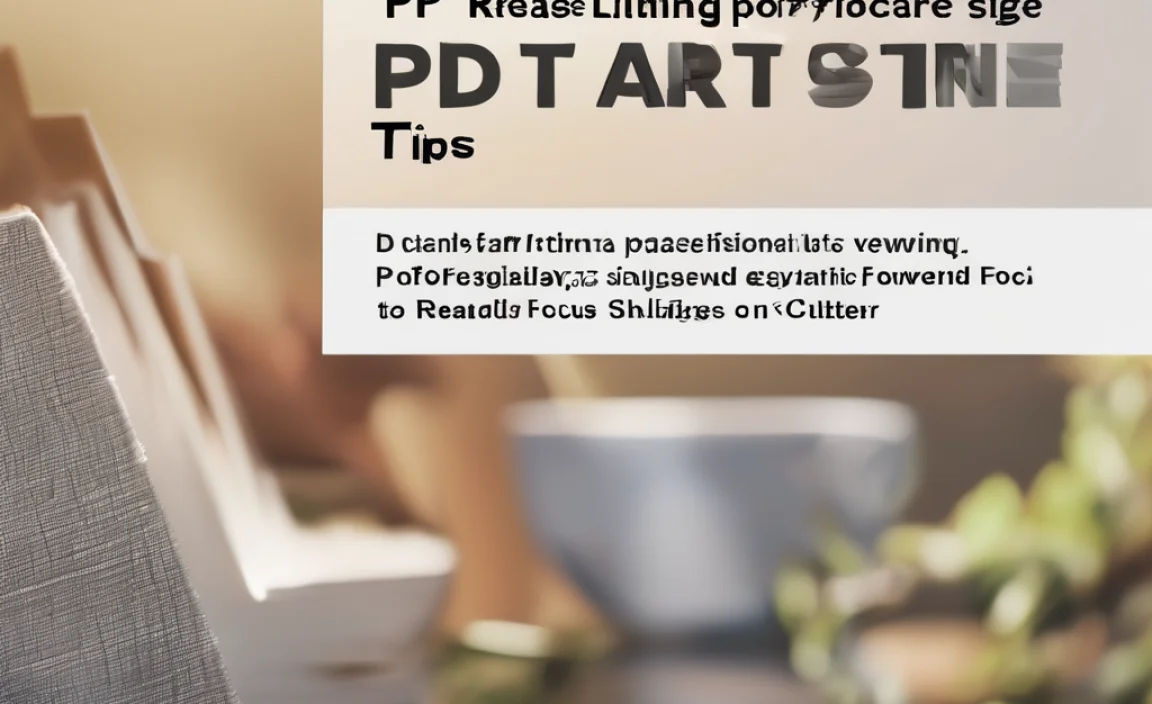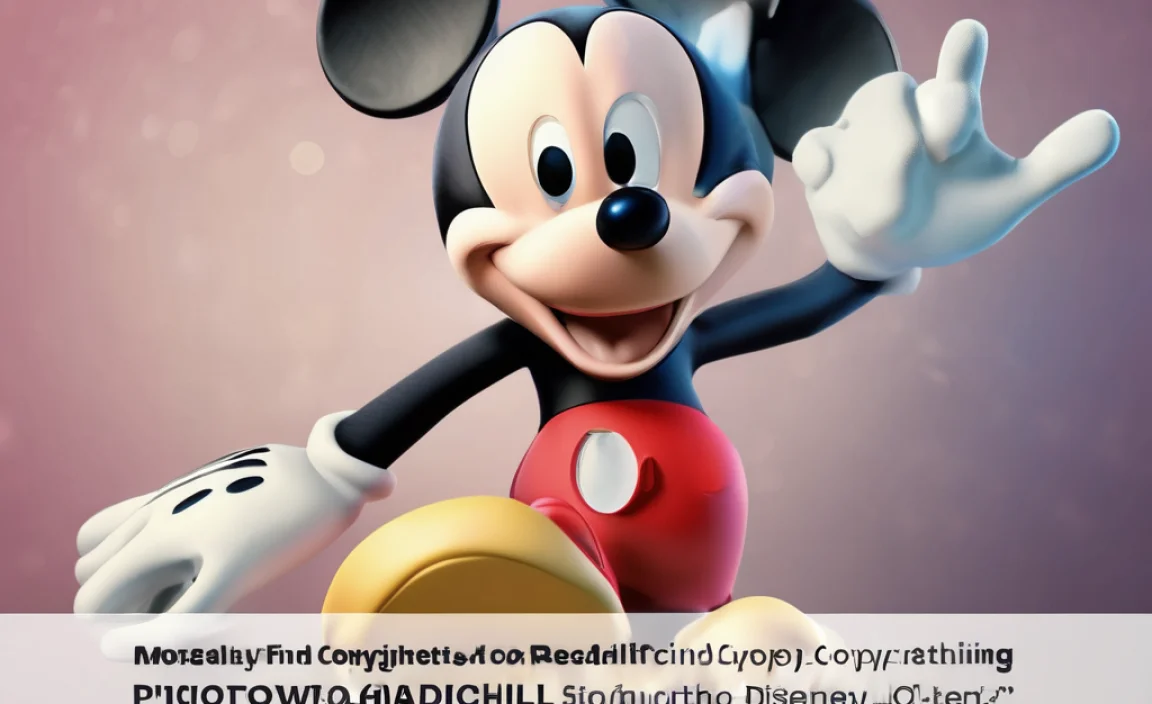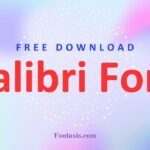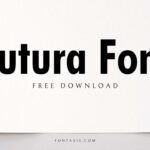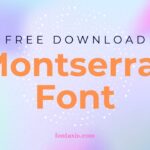The “Now United Font” isn’t a single, distinct typeface. Instead, it refers to the varied and impactful typography used by the global music group Now United across their branding, merchandise, and promotional materials. This article will explore how they leverage different fonts to convey energy, unity, and a dynamic brand identity, offering insights for your own design projects.
Choosing the right font can feel like a big decision for any project, whether it’s a website, a poster, or even just a social media post. Fonts have a way of speaking to us before we even read the words. They can make something feel serious and traditional, or fun and exciting.
For many, figuring out which font works best can lead to a lot of trial and error. If you’ve ever found yourself staring at a screen full of font options, wondering how to pick the one that truly represents your message, you’re not alone! Today, we’re going to break down how a successful brand, the music group Now United, uses typography to create a powerful and unified visual identity. We’ll look at the types of fonts they use and how you can apply similar principles to your own creative endeavors.
Understanding Typography’s Visual Language
Before we dive into the specifics of Now United’s font choices, let’s quickly chat about what fonts actually do. Think of fonts as the personality of your words. They have different styles, weights, and shapes, and each one carries its own feeling. This is where the magic of typography comes alive. It’s not just about making text readable; it’s about adding emotion, tone, and visual appeal.
Fonts can be broadly categorized into a few main groups, each with a unique character:
- Serif Fonts: These have small decorative strokes (called serifs) at the end of the main strokes of letters. Think of classic fonts like Times New Roman. They often feel traditional, formal, and trustworthy, making them great for long blocks of text in books or newspapers.
- Sans-Serif Fonts: As the name suggests, these fonts lack serifs. Examples include Arial and Helvetica. They tend to look clean, modern, and straightforward. They are excellent for web content, headlines, and signage because they are easy to read on screens.
- Script Fonts: These mimic handwriting, ranging from elegant calligraphy to casual scribbles. They add a personal, often romantic or sophisticated touch, but are best used sparingly for decorative purposes or short headings.
- Display Fonts: These are the showstoppers! Display fonts are designed for headlines and large text. They are often unique, artistic, and bold, meant to grab attention and express a strong personality. Think of unique fonts used on movie posters or event flyers.
The way a font is used—its size, color, spacing, and combination with other elements—all contribute to its overall impact. For a brand aiming to connect with a global audience, especially a music group like Now United, the choice and application of typography are crucial for building recognition and conveying their core message.
The “Now United” Brand Identity: What We See
When you look at Now United’s presence—their album art, their website, their social media feeds, even their merchandise—you’ll notice a consistent effort to appear energetic, diverse, and united. This isn’t accidental; it’s a carefully crafted brand story told through visuals, and fonts play a starring role.
While “Now United Font” isn’t a single font name, it hints at a collective of typographical styles that work together harmoniously. Their branding often features bold, modern, and sometimes playful fonts that resonate with a young, international fanbase. This approach aims to be inclusive, accessible, and exciting.
Let’s break down the typical characteristics of the fonts you’ll often see associated with Now United:
- Bold and Impactful: Many headlines and prominent text elements use strong, thick fonts. This makes them stand out and convey confidence and power.
- Modern and Clean: Sans-serif fonts are frequently used, giving their designs a contemporary and sleek feel. This aligns well with a global, digitally-connected audience.
- Energetic and Dynamic: Sometimes, they might use fonts with a slightly quirky or stylized flair, suggesting movement, rhythm, and the exciting nature of music and live performance.
- Legible Across Platforms: Importantly, these fonts are chosen to be clear and easy to read whether on a small phone screen, a large banner, or printed merchandise.
This deliberate use of typography helps create a recognizable look for Now United, making their brand instantly identifiable and appealing to their target demographic. It’s about building a visual language that speaks the same energetic, unified message that their music does.
Exploring Common Font Styles in Now United’s Branding
Digging a bit deeper, we can often see specific types of fonts being utilized that help shape the Now United brand. It’s not about one magic font, but a smart selection that complements their music and image.
Sans-Serif: The Foundation of Modernity
Sans-serif fonts are undoubtedly a cornerstone of Now United’s visual identity. Their clean lines and lack of embellishment make them incredibly versatile and modern. They communicate clarity, efficiency, and a forward-thinking attitude.
For a global group intended to appeal across cultures, sans-serif fonts are an excellent choice because they are universally understood and highly legible. They don’t carry the same historical or regional connotations that some serif fonts might. When you see a bold sans-serif used prominently, it’s designed to grab attention for key messages.
Consider fonts like:
- Montserrat: A popular geometric sans-serif that offers a wide range of weights, from thin hairline to heavy black. It has a friendly yet strong character and is very versatile.
- Lato: Known for its semi-rounded details, giving it a feeling of warmth, while the strong structure provides stability and seriousness.
- Oswald: A condensed, upright sans-serif that is excellent for headlines and on-screen use due to its efficiency in space and readability.
These types of fonts provide a reliable canvas for their branding, ensuring that important information or catchy slogans are communicated effectively and stylishly.
Display Fonts: Adding Personality and Flair
While sans-serif fonts might form the backbone, Now United also utilizes display fonts to inject personality, excitement, and a unique flair into their visuals. These are the fonts that make album covers pop, concert posters grab your eye, and merchandise uniquely memorable.
Display fonts are all about making a statement. They can be:
- Geometric and Bold: Fonts with strong, clear shapes that feel engineered and modern, conveying a sense of precision or futuristic appeal.
- Slightly Stylized or Distorted: Fonts that might have a subtle tilt, a unique curve, or an unusual character shape, adding a dynamic and energetic feel to text.
- Chunky and Playful: Sometimes, they might opt for fonts that have a rounded, almost bubbly quality, adding a sense of fun and approachability.
The key here is to use display fonts strategically. They are rarely used for large blocks of text, as they can become difficult to read. Instead, they are perfect for:
- Album titles
- Single release names
- Promotional taglines
- Event names
- Logotypes or stylized group names
When paired effectively with simpler sans-serif fonts for body text, display fonts allow for a high-contrast design that is both striking and readable. They help define a song’s mood or an album’s theme.
The Power of Font Pairing
A truly effective visual brand doesn’t rely on just one font. Instead, it masterfully pairs different typefaces to create hierarchy, contrast, and visual interest. For Now United, this means combining the readability of sans-serifs with the punch of display fonts.
A common and successful pairing strategy involves using a strong, eye-catching font for headlines or titles and a clean, highly legible sans-serif for supporting text or descriptive information. This creates a clear visual flow for the audience, guiding their eyes through the content.
Let’s imagine a scenario:
| Element | Likely Font Type | Purpose |
|---|---|---|
| Album Title | Bold Display Font (e.g., geometric, stylized) | Grab attention, convey album’s theme/mood, establish brand visual. |
| Artist Name (“Now United”) | Strong Sans-Serif or Custom Logo Type | Consistent brand recognition, clear identification. |
| Track Listings / Song Titles | Medium to Bold Sans-Serif (e.g., Montserrat, Lato) | Legibility, clear information, consistent with overall modern aesthetic. |
| Promotional Text / Social Media Captions | Regular Weight Sans-Serif | Readability, accessibility, conveying information clearly. |
| Taglines / Slogans | Can be a bolder Sans-Serif or a more stylized Display Font | Emphasis, memorable messaging, creative expression. |
This strategic pairing ensures that key branding elements are emphasized while essential information remains accessible. It’s about creating a balanced visual hierarchy that is both aesthetically pleasing and functional.
How to Apply Now United’s Font Philosophy to Your Designs
You don’t need a massive design team to create a strong visual identity with fonts. The principles behind Now United’s typography are accessible to everyone. Here’s how you can borrow from their playbook to make your own projects shine.
1. Define Your Brand’s Personality
Before you even open a font menu, ask yourself: What feeling do I want my project to evoke? Is it energetic, calm, professional, playful, sophisticated, or down-to-earth?
For example:
- A rock band’s poster might use bold, condensed sans-serifs or even distressed display fonts to convey raw energy.
- A children’s book author’s website could opt for rounded, friendly sans-serifs or charming script fonts.
- A tech startup’s branding would likely lean towards clean, minimalist sans-serifs to communicate innovation and efficiency.
Understanding your core message is the first and most crucial step in selecting complementary fonts.
2. Choose a Primary Font for Impact
Select a font that best captures the dominant personality of your brand. This will often be your headline or display font. Think about what Now United does with their bolder, more stylized fonts for titles.
Consider:
- Boldness: Does it need to shout or whisper?
- Uniqueness: Does it stand out without being too distracting?
- Suitability: Does it align with your overall message?
Many designers find success with strong sans-serifs for this role because they are inherently impactful yet broadly appealing. However, a well-chosen display font can be incredibly effective for specific branding.
3. Select a Secondary Font for Readability
Once you have your eye-catching primary font, choose a secondary font that complements it and, most importantly, is highly readable. This is where you’ll put most of your body text, supporting details, or information that needs to be easily consumed.
A good secondary font is typically:
- A clean sans-serif: These are almost always safe and effective choices for body text.
- A simple serif: If your brand has a more traditional or literary feel, a legible serif font for body text can work well, but ensure it’s not too ornate.
- Contrast: It should offer enough contrast to your primary font. If your primary is heavy and bold, a lighter, simpler font will pair nicely.
A common and reliable pairing is a bold sans-serif for headings and a regular-weight sans-serif for paragraphs. This is a strategy that works across many industries and audiences, much like Now United’s approach.
4. Test for Legibility and Consistency
Whatever fonts you choose, always test them. Write out sample headlines and paragraphs. Look at them on different screen sizes (desktop, tablet, mobile) and in different contexts (social media graphic, website banner, printed flyer).
Ask yourself:
- Is the text easy to read at various sizes?
- Do the fonts look good together?
- Does the overall impression match the personality I want to convey?
Consistency is key. Once you’ve settled on a font pairing, try to stick with it across your brand materials. This builds recognition and a professional, cohesive look.
5. Leverage Font Families for Versatility
Many modern fonts come in extensive “families” that include various weights (light, regular, medium, bold, black) and styles (italic). Using different weights from the same font family can create hierarchy and visual interest without needing to introduce a second, potentially clashing, font.
For instance, if you choose Montserrat as your primary font for headings, you can use:
- Montserrat Black for the main title.
- Montserrat Bold for subheadings.
- Montserrat Regular for body text.
This results in a unified yet dynamic typographic system. This is the essence of achieving design power with minimal font choices, ensuring a strong, cohesive look akin to how a group like Now United maintains its brand integrity.
Tools and Resources for Font Exploration
Exploring fonts can be an exciting part of the design process. Thankfully, there are abundant resources, many of them free, to help you discover and utilize typography effectively.
Where to Find High-Quality Fonts
When looking for fonts that have the impact and clarity like those associated with Now United, consider these reputable sources:
- Google Fonts: A massive library of open-source fonts that are all free to use for any project, including commercial ones. This is an excellent starting point for finding versatile sans-serifs and even some display options. You can preview text directly on their site, which is fantastic for initial testing. Learn more about typography on Google Fonts here.
- Adobe Fonts: If you’re an Adobe Creative Cloud subscriber, you get access to a vast collection of high-quality fonts that can be activated directly within your Adobe applications. This offers premium options for a professional finish.
- Font Squirrel: This site curates free fonts that are safe for commercial use, often with high design quality. It’s a great place to find unique display fonts that still maintain legibility.
- MyFonts / FontShop: These are leading marketplaces for purchasing premium fonts. If you have a budget and need something truly unique or exceptionally well-crafted, these platforms are the place to look.
Font Management and Pairing Tools
Once you start collecting fonts, you might need help managing them or finding good combinations. Here are a few tools that can simplify the process:
- Fontjoy: This AI-powered tool helps you generate font pairings based on color, optimism, and other parameters. It’s a fun way to discover combinations you might not have thought of.
- Typewolf: A fantastic resource for designers, Typewolf showcases font pairings used on popular websites and provides curated lists of recommended fonts for various uses.
- InBrowser Font Previews: Many font websites, including Google Fonts, allow you to type in your own text and see how it looks in a particular font before you download or select it. This is crucial for testing readability.
Experimenting with these resources can demystify typography and empower you to make confident font choices that resonate with your audience, just as Now United does with theirs.
FAQs
What is the “Now United Font”?
The “Now United Font” isn’t a single, specific typeface. It refers to the diverse range of fonts the global music group uses in their branding to convey energy, unity, and modernity. They typically use bold sans-serifs for a clean, impactful look and sometimes employ stylized display fonts for added personality.
Why are fonts important for a music group like Now United?
Fonts are crucial for brand identity. For a global group, they help create a recognizable, cohesive visual language that communicates their energetic, diverse, and unified message. This consistency builds brand recognition among fans worldwide.
What kind of fonts does Now United usually use?
They commonly use modern, bold sans-serif fonts for their clean, accessible, and energetic feel. They also incorporate stylized display fonts for titles and key visual elements to add flair and capture attention.

